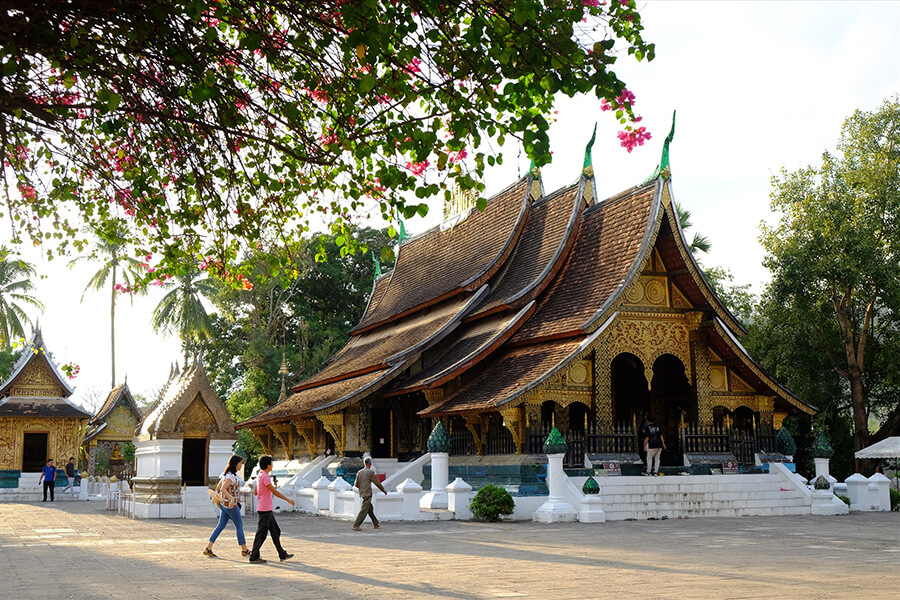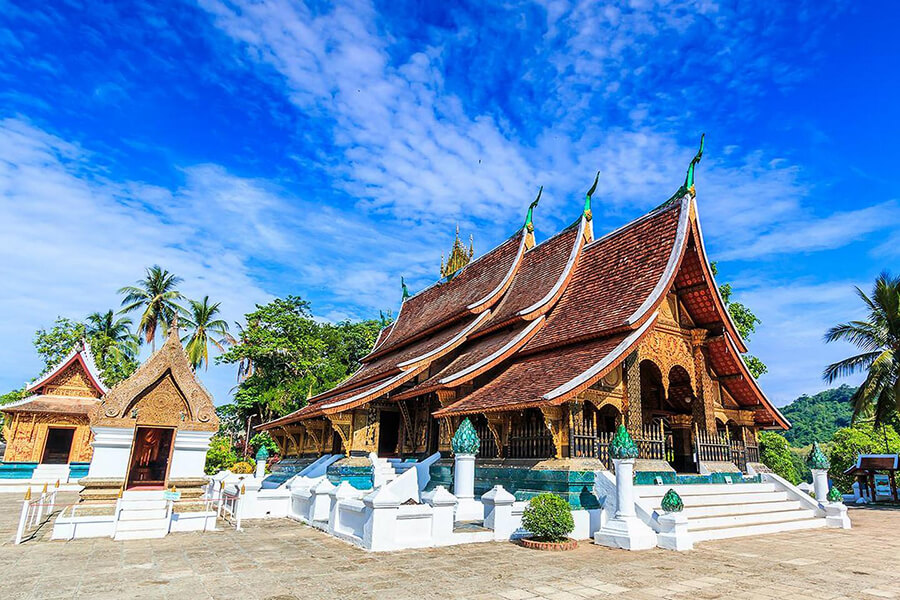Explore the renowned Buddhist monastery of Wat Xieng Thong, affectionately known as the “Golden City Temple,” during your Laos tour. This sacred site is celebrated for its rich history and breathtaking architecture. Delve into the origins of the temple and marvel at its picturesque location as you immerse yourself in Laos’s cultural heritage
Origins of Wat Xieng Thong
Wat Xieng Thong was established in 1560 by King Setthathirath, a notable ruler of the Kingdom of Lan Xang. His reign marked a significant period in the spread of Buddhism in Laos. King Setthathirath played a crucial role in promoting Theravada Buddhism and envisioned Wat Xieng Thong as a grand symbol of devotion to the faith.
The name “Wat Xieng Thong” translates to “Temple of the Golden City” or “Golden Tree Monastery,” reflecting the temple’s significance and regal splendor. Its creation was not just an architectural feat but a testament to the king’s desire to make Luang Prabang the capital of Lan Xang.
Wat Xieng Thong is strategically situated in the town of Luang Prabang, a UNESCO World Heritage site in northern Laos. Luang Prabang is celebrated for its well-preserved cultural and architectural heritage.
The temple’s location at the confluence of the Mekong and Nam Khan rivers holds profound symbolism in Lao culture, representing the unity of the country. As visitors enter Luang Prabang’s historic district, they are greeted by the sight of Wat Xieng Thong amid a tranquil and lush environment. This serene setting makes the temple a must-visit destination for those exploring Laos’s cultural and historical treasures.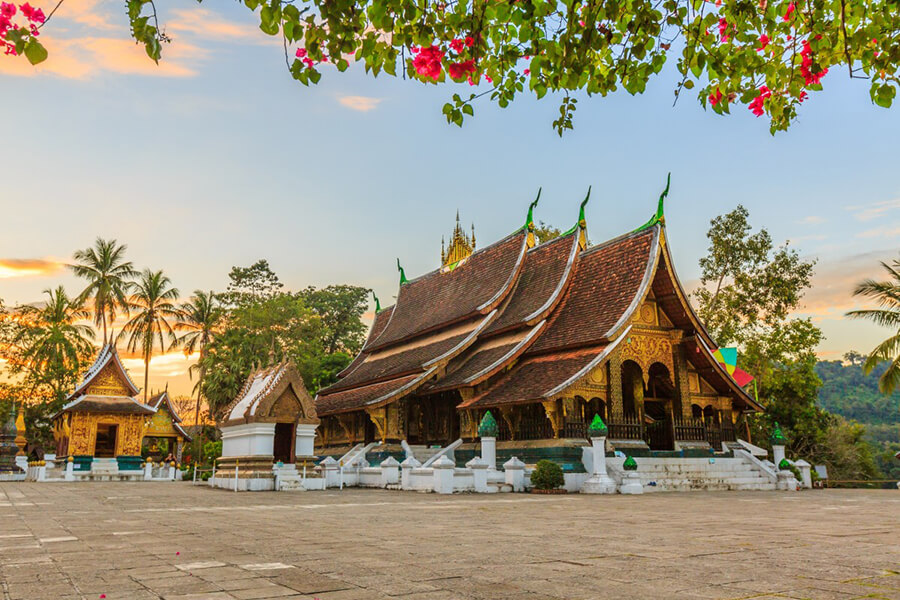
Wat Xieng Thong – Architectural Grandeur and Spiritual Significance
At the heart of Wat Xieng Thong lies the Sim, the main ordination hall, and arguably, the most striking architectural feature of the temple. The Sim is an embodiment of architectural opulence, boasting a multi-tiered roof that gracefully sweeps downward. Adorned with intricate golden motifs and meticulously carved gables, the Sim stands as a remarkable masterpiece of Lao craftsmanship. It serves as the spiritual nucleus of the temple, providing a tranquil sanctuary for monks’ meditation and prayer.
As one navigates the temple complex, they encounter a series of smaller chapels, each with its unique character and religious significance. The Red Chapel, adorned with vivid red and gold hues, houses a rare reclining Buddha image—a symbol of the Buddha’s journey into Nirvana. The Chapel of the Standing Buddha, on the other hand, showcases a towering statue that emanates a profound spiritual presence. These chapels serve as places of devotion and reflection, inviting visitors to connect with their spiritual selves.
Wat Xieng Thong’s commitment to preserving Buddhist knowledge is epitomized by the Ho Trai, the temple library. Elevated on wooden stilts to safeguard ancient manuscripts from humidity and pests, the Ho Trai is a harmonious blend of functionality and architectural elegance. It stands as a symbol of the temple’s unwavering dedication to the wisdom enshrined within its sacred texts.
The temple’s architectural splendor extends to its essential ritual spaces—the drum tower and crematorium. These structures play pivotal roles in Wat Xieng Thong’s religious ceremonies and are characterized by their distinctive designs. The drum tower, with its towering presence and intricate wooden carvings, adds to the temple’s visual grandeur. The crematorium, a solemn space where final rites are conducted, reflects the temple’s commitment to honoring the departed with dignity and grace.
Throughout the temple, visitors are greeted by intricate carvings and decorations featuring the Naga, a mythical serpent that symbolizes protection and prosperity in Lao culture. The presence of the Naga in Wat Xieng Thong’s architecture underscores the temple’s belief in spiritual safeguarding and its reverence for Lao traditions.
Every nook and cranny of Wat Xieng Thong is adorned with vibrant mosaics, elaborate wood carvings, and intricate stencil patterns. These artistic elements serve as visual narratives of Lao history, culture, and Buddhism. They transform the temple into a living museum of artistry, allowing visitors to immerse themselves in the exquisite craftsmanship and storytelling prowess of the Lao people.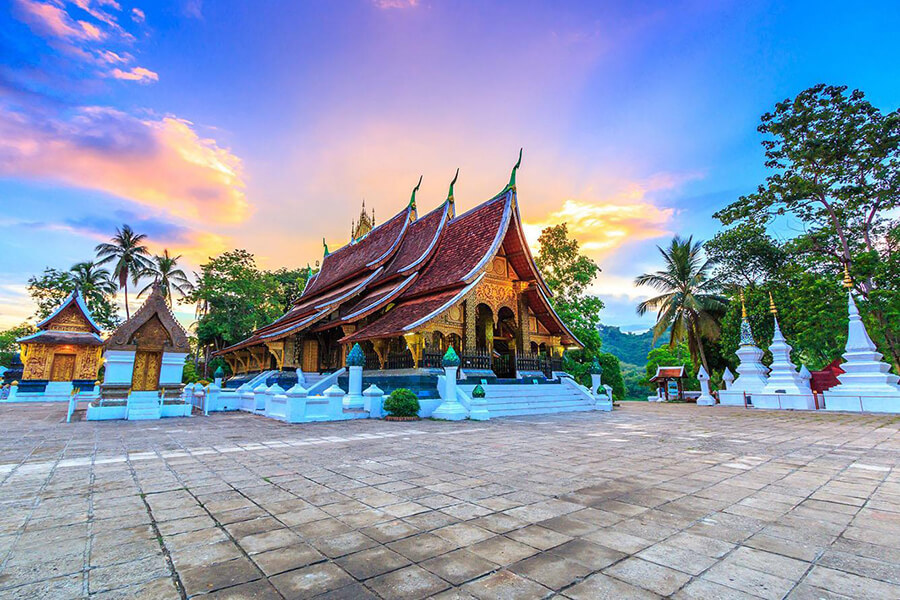
Ticket Prices and Opening Hours at Wat Xieng Thong Luang Prabang
Ticket Prices
Standard Admission Ticket: The standard admission ticket for Wat Xieng Thong typically ranges from 20,000 Lao Kip (approximately $2 to $3 USD). This ticket grants you access to the main areas of the temple complex, including the Sim (ordination hall), chapels, courtyards, and the renowned “Tree of Life” mosaic.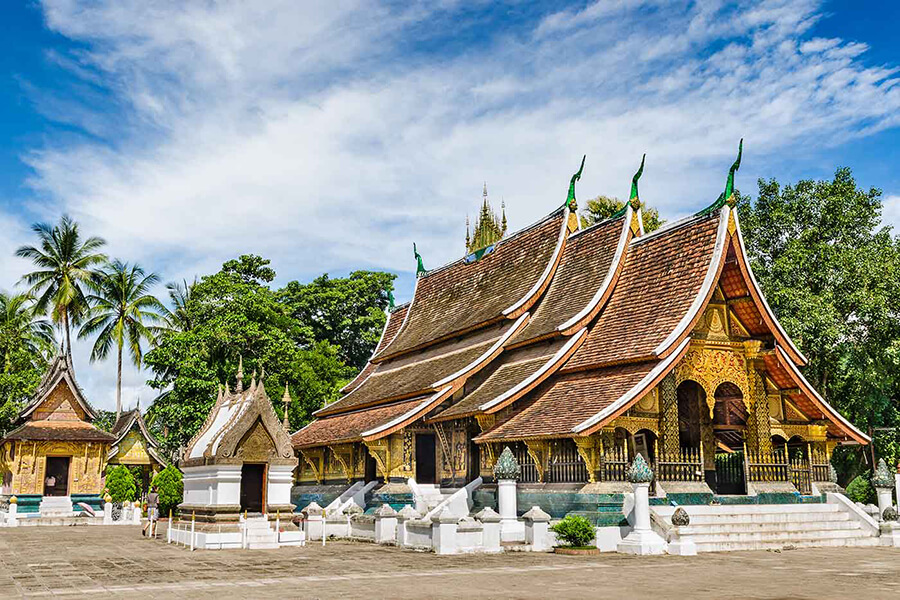
Wat Xieng Thong Opening Hours
Opening Hours: Wat Xieng Thong is typically open to visitors from 8:00 AM to 6:00 PM daily. These hours allow you to explore the temple complex during daylight hours when the intricate architecture and cultural details are best appreciated.
Special Events: Occasionally, Wat Xieng Thong may host special events, ceremonies, or festivals that could impact regular visiting hours. It’s a good idea to check with the temple or local tourism authorities for any updates on special events that might coincide with your visit.
More tips for Visiting Wat Xieng Thong
Photography: While photography is generally allowed in most areas of Wat Xieng Thong, be considerate of any signs or guidelines regarding photography restrictions, especially in sacred spaces. Always ask for permission if photographing individuals, and be respectful of their wishes.
Respectful Attire: When visiting the temple, it’s customary to dress modestly out of respect for the sacredness of the site. Cover your shoulders and knees, and avoid wearing revealing clothing.
Footwear: Prepare to remove your shoes before entering certain areas of the temple complex. Carrying a pair of socks can be helpful for comfort and hygiene.
Silence and Reverence: Maintain a sense of silence and reverence, particularly in areas where worshippers may be engaged in prayer or meditation. This creates a peaceful atmosphere for both visitors and worshippers.
By being informed about ticket prices, opening hours, and temple etiquette, you can make the most of your visit to Wat Xieng Thong. As you explore this architectural marvel and immerse yourself in Lao culture, these practical details will ensure a respectful and enriching experience. Enjoy your journey into the heart of Luang Prabang’s cultural heritage at Wat Xieng Thong!